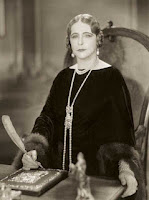The development of conflict is perhaps the single most difficult task of the writer. It is also the most important.
Action
in a story is defined by characters talking or moving, much like actors
on a stage, but in order to feel written words come to life, a reader
needs more.
In a time when mass telecommunications have brought information to our
fingertips with the flick of a switch, a reader expects excitement and
entertainment in everything she reads. The conflict of the story is the
avenue by which a writer can hook the reader and keep her turning pages.
A
scene should always portray a struggle. It is used to reveal something
interesting, important, or exciting that is happening, something which
advances the plot of the story, usually by adding to the character's
problems. It follows that the conflict of each scene is shown, not told,
to the reader in a moment by moment sequence that imitates real life.
(No summary allowed.)
The answer to writing conflict begins with
the invention of characters. A good rule of thumb to follow is the old
adage, opposites attract. When hero and heroine come from separate ends
of the spectrum, struggle results from their differences.
The progression of each scene into conflict can be categorized into three steps.
Identify the character's goal:
Just as a book should start by stating a character's goal, so should
each scene begin by showing what the character wants to accomplish and
why. There are several ways to do this. Direct dialogue is an excellent
approach to introduce character, while at the same time showing his
motivation and intent. Well written dialogue makes writing flow and
brings a realism that simulates life's experiences. Another way to
reveal goal is through character internalization. Using a single point
of view, delve into the character's thoughts and show how he sees his
world. The nature of the character enlightens the reader. This includes
revealing prejudices, ignorance, and fears, and most importantly the
character's purpose. The third and last way to reveal goal is to
paraphrase in the opening line of the story. This brings the character's
intent into the reader's mind immediately. Whichever method you choose,
be sure that the goal is stated as soon as possible in a clear and
concise form.
Present conflict: After the reader
knows what the character wants to accomplish, drop the brick with the
all important struggle. Provide conflict by placing an obstacle in the
character's path.
He can't reach his goal. So, creates the problem. And voila`, a scene
is born. A word of caution here. Conflict is not to be confused with
sexual tension. Rather, the struggle is intrinsic to the goal of the
character, not just a hero trying to sleep with the heroine. Real
conflict is further categorized into two kinds. Internal conflict is
described as the inner struggle and usually deals with the character's
emotions. It must be serious and deep. Examples include a heroine pining
for the husband who never came home from the war, a heroine hiding the
fact that the son she had born out of wedlock belongs to her brother's
best friend. External conflict, on the other hand, is visible. It is
defined as the influence from an outside force which threatens the
character's life. Examples: a fire that destroys the heroine's home and
subsequent threats on her life, a villain trying to kill the hero or
heroine, a ghost held captive in an inn. Both types of conflict work
together. A word of advice, however. Beware of trivial or unconvincing
misunderstandings. Conflict must be believable and strong.
Culminate the action with a catastrophe:
Once you have developed the struggle and brought the character into the
depth of the conflict, pull out all the stops and impact the
confrontation with a disaster. In other words, make things worse. The
story moves forward by shoving the main character farther and farther
away from his purpose. Like the black moment at the climax of a novel,
each scene should present a major crisis, and that crisis must be
directly related to the character's struggle within the scene. Equally
important, remember that all conflict in a novel is tied in a
progression to the character's ultimate goal. There's a reason for
everything. How does the novel end? The poor hero gets a break and
finally meets his goal. The conflict is resolved.
In any
well-written novel, the struggle is what makes the writing exceptional.
Tension brews while the character tries in vain to achieve his goal. And
as tension builds, the pacing flows.
The reader identifies with the character and feels sorry for her.
Emotion is tapped, drawing the reader into the scene until the
conclusion, keeping the book in her hand until the very last word.
Writing
is anything but easy. An author puts her blood and sweat into her work,
her time, her very soul. Perhaps, she might compare the well
constructed conflict in a scene to her life as a writer. Good writing is
the intent, getting there is the struggle, and there are always
disasters along the road. But in the end, the writer who concentrates on
creating conflict, studies the craft of writing, and works with
diligence and without relent will meet her final goal.



.jpeg)

.jpg)

